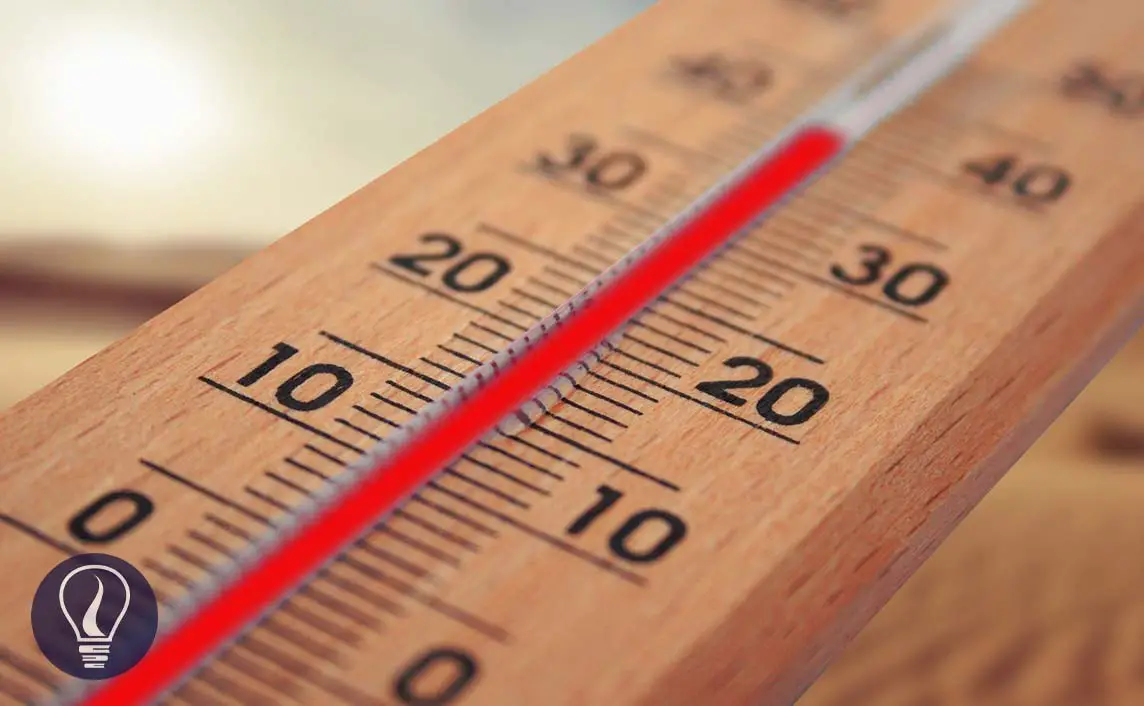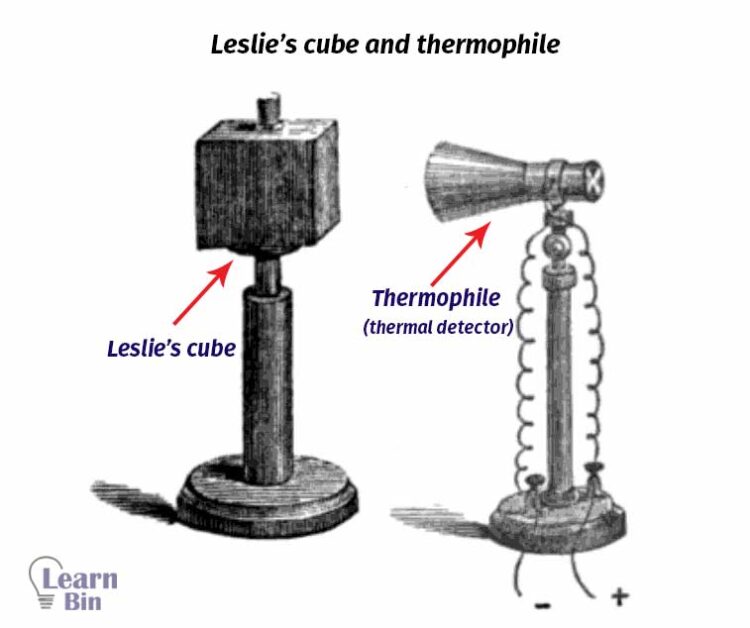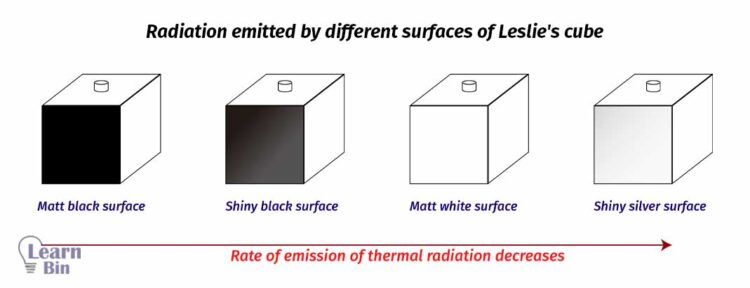More results...


As we know there are three methods of heat transferring. These are conduction, convection, and radiation. A medium is necessary to transfer heat by conduction and convection. But the heat can be transferred by radiation without involving any medium.
The transfer of the heat from the sun to the earth through the empty space is an example of radiation. The transfer of heat by radiation is known as thermal radiation. Thermal radiation is emitted by all the objects. When the temperature of the object is increased, the amount of the radiation energy is also increased.
Radiation intensity is the amount of radiant energy transmitted per second through a unit area. Mathematically, if an area with a surface area of A, is passed E amount of radiant energy for t amount of seconds, the intensity (I) of the radiation would be,

Where,
The solar constant (ISC) is the intensity of the radiation of the sun. Simply it is the energy received from the sun per second through a unit area. Mathematically, the solar constant is the amount of radiation energy transferred per second, through a unit area on Earth and that is perpendicular to the sun's radiation.
The value of the solar constant is 1.366 kWm-2 (Kilowatts per square meter) (1366.1 Wm-2) according to the American Society for Testing and Materials (ASTM). Even though this is the value accepted by ASTM, different values for solar constant are used by other institutes and researchers.
Eg: ISC - 1367 Wm-2 - The World Radiometric Center (WRC)
Thermal radiation is emitted by heated bodies. It is also electromagnetic radiation. Since it is electromagnetic radiation, it does not need a medium to propagate and travels with the velocity of light. Thermal radiation obeys the laws of reflection and refraction.
The rate of emission of heat radiation depends on three factors which are temperature, surface area, and the nature of the surface. These factors can be demonstrated by "Leslie's cube" and "Crooke's radiometer".
Leslie's cube is a metallic hollow cube that is used to demonstrate the factors affecting the rate of thermal radiation. Each vertical faces of the cube are coated with, Matt black, Shiny black, Shiny silver, and Matt white paints.
The Leslie’s cube is filled with boiling hot water. The radiation emitted from each side is measured using a thermophile.

It can be observed that the surface coated with matt black will emit the highest amount of radiation while the shiny silver surface emits the least amount of radiation. The shiny black surface will emit radiation lower than the matt black surface but higher than the matt white surface.

From the above experiment, we can conclude that the black surfaces emit a higher amount of thermal radiation and white surfaces emit a lower amount of thermal radiation. Also, matt surfaces emit a higher amount of thermal radiation than the shiny surfaces.
This experiment is done with the different sizes of Leslie’s cubes and under different temperatures of water. All the experiments show the same behavior.
But, when the temperature is decreasing, the amount of the radiation emitted is also decreasing. And when the surface area is decreasing the amount of the radiation is also decreasing. Therefore, it can be concluded that the factors affecting the thermal radiation are,
Crooke's radiometer is also used to demonstrate thermal radiation. It is an apparatus with a glass bulb and a small windmill that is mounted inside the glass blub. The windmill has four vanes that are made with mica. One surface of each vane is coated with matt back paint and the other side remains shiny. The air pressure inside the bulb is low.
When the radiometer is exposed to thermal radiation, the black surfaces will absorb higher radiation than the shiny surfaces. Therefore, the temperature of the black sides is higher than the shiny surfaces.
Since the temperature is high, the molecules that collide with the black surfaces will rebound with higher average velocity than the shiny surfaces. This will cause the windmill to rotate with the shiny surface at the lead.


The cover image was created using an image by Gerd Altmann from Pixabay
Figure 01: Contains an image by John Tyndall, licensed under the Public domain, via Wikimedia Commons
Figure 03: Contains an image by Timeline, licensed under CC BY-SA 3.0, via Wikimedia Commons